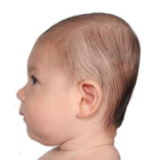Shop
01947
https://www.under5s.co.nz/shop/Hot+Topics+Articles/Health+%26+Wellbeing/Babies/Meningitis+in+babies+and+toddlers.html
Meningitis in babies & toddlers
|
Would you know if your baby or toddler had meningitis? Spotting the symptoms early could save their life. We take a look at some of the causes, treatment and prevention of meningitis, the glass test and how you can help protect your baby or toddler.
|
You might also be interested in ...
How to transition from 2 naps to 1
Anywhere between the ages of 12 months and 18 months your toddler will be ready to transition from two naps to one nap each day. But how do you know when they’re ready to drop a nap? And if so, what then?
Flat head syndrome
Does your baby have flat head syndrome, also known as positional plagiocephaly? We take a look at some of the causes, treatment and tips on how to prevent flat syndrome. As well as ways to improve your baby’s posture, balance and head control, and encouraging natural correction of their head shape.
join usJoin us on social media for all our latest news. |
sign upSign up and receive our latest newsletters. |
|







Spotting the symptoms early could save their life.
We take a look at some of the causes, treatment and prevention of meningitis, the glass test and how you can help protect your baby or toddler.
Meningitis in babies & toddlers
What is meningitis?
What causes meningitis?
Meningitis symptoms
10 common warning signs of meningitis
Signs to look out for if you think your baby or toddler might have meningitis include:
1. A high temperature
2. Clammy pale skin
3. Sleepiness and difficult to rouse
4. Refusal to feed
5. Vomiting (this can also be projectile and in large quantities)
6. A bulging or tense fontanel (the soft spot on top of your baby's head)
7. Seem irritable when handled
8. High-pitched shrieking or crying. especially when handled
9. Cold hands and feet despite a high temperature
10. Purple rash that does not fade with pressure. However, this does not always appear in babies and is usually only present when the child also has scepticaemia .
Scepticaemia warning signs
Signs to look out for if you think your baby or toddler might have septicaemia include:
The glass test for scepticaemia
Should your baby or toddler have a rash, use the glass test (also known as the tumbler test) to check for septicaemia:
1. Press a glass tumbler firmly against the rash. If it doesn’t fade, it could be a septicaemic rash.
2. If this happens, seek medical advice immediately. And even if you’re not quite sure, don’t wait.
Press a glass tumbler firmly against the rash. If it doesn’t fade, it could be a septicaemic rash.
If this happens, seek medical advice immediately. And even if you’re not quite sure, don’t wait.
- See more at: http://www.madeformums.com/baby/meningitis-symptoms-to-watch-out-for-in-babies-and-toddlers/1737.html#sthash.zJsEV8f6.dpuf
Treating meningitis
Preventing meningitis
More kids health articles to enjoy:
- Measles
- Hand, foot and mouth disease
- When to see a doctor
Image source: blogs.redcroos.org.uk